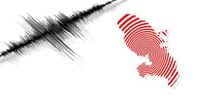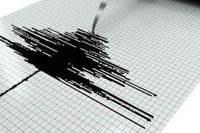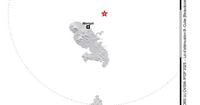On March 25, 2025, at 0:53 local time, Martinique experienced a significant earthquake registering a magnitude of 4.5. The Observatoire Volcanologique et Sismologique de Martinique, in collaboration with the Institute of Earth Physics of Paris (IPGP), confirmed that the epicenter of this tectonic quake was located 24 kilometers northeast of Marigot, at a depth of 114 kilometers.
The earthquake's impact was measured through ground acceleration and was noted to generate an average acceleration of 1.1 mg, which corresponds to a macroseismic intensity of I-II. While many reported feeling the tremors, it is classified as 'non-felt' in many areas, with localized intensities potentially reaching a level III, where the tremor may have been 'lightly felt.'
Social media buzzed with reactions from residents, showcasing the widespread public concern following the quake. Isabelle C. from Lamentin commented on Facebook, saying, "I felt the tremor very strongly." Mylène D. also shared her experience, stating, "Wow, the building shook really hard!" Many other locals echoed similar sentiments, with some describing the sensation as alarming and frightening. Taïna F. noted, "Felt it strongly at Le Diamant," while Kanoù C. remarked, "Very well felt in Lorrain." Such testimonies offer a glimpse into how seismic activity profoundly affects the psychological landscape of impacted communities.
Just three days prior, on March 22, another earthquake had jolted the region, registering a smaller magnitude of 3.1. Its epicenter was situated a mere 3 kilometers south-southwest of Sainte-Marie. In total, since the beginning of 2025, Martinique has recorded five earthquakes, leading scientists to monitor the situation closely.
The IPGP's weekly bulletin reported a particularly active week from March 14 to March 21, 2025, highlighting that 221 low-energy volcano-tectonic events were cataloged around Saint-Pierre. These statistics point to a heightened volcanic activity in the region, prompting researchers and local authorities to remain vigilant.
Returning to the recent quake, the seismic community is particularly attentive to these developments as they may signify deeper geological activities beneath the surface of the island. The tectonic origin of such quakes is a reminder of the intrinsic geological nature of Martinique, sitting as it does along a complex system of faults and volcanic channels attributed to the Caribbean and North American tectonic plates.
As residents continue to process their experiences following the latest tremor, it's crucial for community leaders and local government to reinforce awareness about earthquake preparedness. Conversations around safety protocols and emergency responses are vital as scientists predict ongoing seismic activities in the vicinity.
The narratives emerging from social media illustrate not only personal experiences but also the communal impact that such natural phenomena can have. Local resident Rose D.L. mentioned, "My doors trembled, and it was quite unsettling," indicating how such tremors disrupt daily life and evoke a sense of unease. The community's collective voice captures the tension and anxiety surrounding these occurrences.
Holistically, the recent activity in Martinique underscores the importance of geological studies and public education on earthquake readiness. With the recent instances of seismic disturbances, the need for preparedness is not just recommended but necessary for safety. As the year unfolds, the monitoring institutions like IPGP will likely continue to play a vital role in providing updates and guidance to ensure that both visitors and residents can navigate their lives with a sense of security amid the undulating Caribbean landscape.
In conclusion, Martinique stands on a volcano-riddled terrain, making this recent earthquake a small yet potent reminder of nature's undeniable force. Vigilance is key, and while the immediate threats may subside, the events of March 25 have sparked broader conversations surrounding public safety and environmental awareness in the region.






